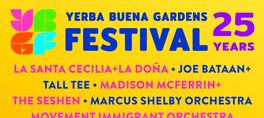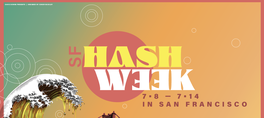Tue July 29, 2014
Please Join SF Bay ACS for Angela Szesciorka's presentation: “The Role of Dive and Foraging Behaviors in Ship Strikes”
SEE EVENT DETAILS
at Saylor's Restaurant and Bar
(see times)
Like foraging marine animals, humans rely disproportionately on productive coastal areas created by upwelling. Particularly sensitive cetaceans are vulnerable to anthropogenic inputs when they converge with human activities. These inputs range from contaminants and toxins to entanglement in marine debris and noise, which affects communication, causes hearing loss and displacement, and even causes mass stranding. The most direct interaction between humans and whales occurs when a ship physically strikes a whale. Off the west coast of the United States, blue, fin, humpback, and gray whale deaths are linked to ship strikes annually. In 2007 after four blue whale deaths were attributed to ship strikes, conservation groups began pushing for greater protection. Researchers analyzed the overlap between whale habitat and ship traffic, prompting an amendment to the major shipping lanes off San Francisco and Santa Barbara in June. Despite initial measures, ship strikes continue, and many questions remain about the behavior of whales in shipping lanes, how behaviors increase the risk of ship strikes, and how ships affect behavior. From August to October we tagged 12 whales in the major shipping lanes off San Francisco with time-depth-GPS tags. By pairing geospatial locations of whales and ships with behavior, we can assess close encounters and determine if the presence of ships directly affects behavior. And by examining whale dive parameters (dive type, descent and ascent speed, dive duration, dive depth, and surface time) with respect to whale group composition and size, age class, sex, prey layer, ship presence, and time of day, we can characterize whale dive and foraging behaviors in and around shipping lanes to understand which factors put them most at risk of potentially fatal ship strikes.
Biography 
Chasing her dream of being a National Geographic correspondent, Angela moved to California after earning her bachelor’s degree in Journalism from Duquesne University to pursue a master’s in marine science at Moss Landing Marine Laboratories. Along the way she has worked for coastal engineering, media, nonprofit, personal finance, and academic organizations. A relentless learner, her time is filled with finding ways to work with marine animals, whether through tide pooling escapades or volunteering. At the California Academy of Sciences, Angela cataloged gastropods from the Cordell Bank Expedition. She spent one summer at a zoo preparing animal diets, scooping poop, and avoiding getting chewed on by goats. Hoping to get up-close-and-personal with marine life, she became a stranding rescue volunteer for The Marine Mammal Center where she responded to strandings, assessed the health of marine mammals, and transported them to Sausalito for medical assistance and release. As a Beach COMBERS volunteer, she surveys Monterey Bay beaches for beach cast marine birds and mammals.Angela’s master’s thesis will examine humpback whale dive and foraging behavior in and around the San Francisco shipping lanes. Her research interests include marine mammal foraging ecology, kinematics and physiology, habitat utilization, anthropogenic impacts, and conservation. Angela works as an aerial observer for NOAA and a biological monitor for Moss Landing Marine Laboratories.Angela is a certified passive acoustic technician. She has helicopter underwater egress training survival training, state and federal boating training, is scuba certified, and a wildlife rehabilitator with the International Wildlife Rehabilitation Council. She writes for “The Drop-In to Moss Landing Marine Labs” blog and her personal blog “Many Lobsters”.
show less
Biography 
Chasing her dream of being a National Geographic correspondent, Angela moved to California after earning her bachelor’s degree in Journalism from Duquesne University to pursue a master’s in marine science at Moss Landing Marine Laboratories. Along the way she has worked for coastal engineering, media, nonprofit, personal finance, and academic organizations. A relentless learner, her time is filled with finding ways to work with marine animals, whether through tide pooling escapades or volunteering. At the California Academy of Sciences, Angela cataloged gastropods from the Cordell Bank Expedition. She spent one summer at a zoo preparing animal diets, scooping poop, and avoiding getting chewed on by goats. Hoping to get up-close-and-personal with marine life, she became a stranding rescue volunteer for The Marine Mammal Center where she responded to strandings, assessed the health of marine mammals, and transported them to Sausalito for medical assistance and release. As a Beach COMBERS volunteer, she surveys Monterey Bay beaches for beach cast marine birds and mammals.Angela’s master’s thesis will examine humpback whale dive and foraging behavior in and around the San Francisco shipping lanes. Her research interests include marine mammal foraging ecology, kinematics and physiology, habitat utilization, anthropogenic impacts, and conservation. Angela works as an aerial observer for NOAA and a biological monitor for Moss Landing Marine Laboratories.Angela is a certified passive acoustic technician. She has helicopter underwater egress training survival training, state and federal boating training, is scuba certified, and a wildlife rehabilitator with the International Wildlife Rehabilitation Council. She writes for “The Drop-In to Moss Landing Marine Labs” blog and her personal blog “Many Lobsters”.
Like foraging marine animals, humans rely disproportionately on productive coastal areas created by upwelling. Particularly sensitive cetaceans are vulnerable to anthropogenic inputs when they converge with human activities. These inputs range from contaminants and toxins to entanglement in marine debris and noise, which affects communication, causes hearing loss and displacement, and even causes mass stranding. The most direct interaction between humans and whales occurs when a ship physically strikes a whale. Off the west coast of the United States, blue, fin, humpback, and gray whale deaths are linked to ship strikes annually. In 2007 after four blue whale deaths were attributed to ship strikes, conservation groups began pushing for greater protection. Researchers analyzed the overlap between whale habitat and ship traffic, prompting an amendment to the major shipping lanes off San Francisco and Santa Barbara in June. Despite initial measures, ship strikes continue, and many questions remain about the behavior of whales in shipping lanes, how behaviors increase the risk of ship strikes, and how ships affect behavior. From August to October we tagged 12 whales in the major shipping lanes off San Francisco with time-depth-GPS tags. By pairing geospatial locations of whales and ships with behavior, we can assess close encounters and determine if the presence of ships directly affects behavior. And by examining whale dive parameters (dive type, descent and ascent speed, dive duration, dive depth, and surface time) with respect to whale group composition and size, age class, sex, prey layer, ship presence, and time of day, we can characterize whale dive and foraging behaviors in and around shipping lanes to understand which factors put them most at risk of potentially fatal ship strikes.
Biography 
Chasing her dream of being a National Geographic correspondent, Angela moved to California after earning her bachelor’s degree in Journalism from Duquesne University to pursue a master’s in marine science at Moss Landing Marine Laboratories. Along the way she has worked for coastal engineering, media, nonprofit, personal finance, and academic organizations. A relentless learner, her time is filled with finding ways to work with marine animals, whether through tide pooling escapades or volunteering. At the California Academy of Sciences, Angela cataloged gastropods from the Cordell Bank Expedition. She spent one summer at a zoo preparing animal diets, scooping poop, and avoiding getting chewed on by goats. Hoping to get up-close-and-personal with marine life, she became a stranding rescue volunteer for The Marine Mammal Center where she responded to strandings, assessed the health of marine mammals, and transported them to Sausalito for medical assistance and release. As a Beach COMBERS volunteer, she surveys Monterey Bay beaches for beach cast marine birds and mammals.Angela’s master’s thesis will examine humpback whale dive and foraging behavior in and around the San Francisco shipping lanes. Her research interests include marine mammal foraging ecology, kinematics and physiology, habitat utilization, anthropogenic impacts, and conservation. Angela works as an aerial observer for NOAA and a biological monitor for Moss Landing Marine Laboratories.Angela is a certified passive acoustic technician. She has helicopter underwater egress training survival training, state and federal boating training, is scuba certified, and a wildlife rehabilitator with the International Wildlife Rehabilitation Council. She writes for “The Drop-In to Moss Landing Marine Labs” blog and her personal blog “Many Lobsters”.
read more
Biography 
Chasing her dream of being a National Geographic correspondent, Angela moved to California after earning her bachelor’s degree in Journalism from Duquesne University to pursue a master’s in marine science at Moss Landing Marine Laboratories. Along the way she has worked for coastal engineering, media, nonprofit, personal finance, and academic organizations. A relentless learner, her time is filled with finding ways to work with marine animals, whether through tide pooling escapades or volunteering. At the California Academy of Sciences, Angela cataloged gastropods from the Cordell Bank Expedition. She spent one summer at a zoo preparing animal diets, scooping poop, and avoiding getting chewed on by goats. Hoping to get up-close-and-personal with marine life, she became a stranding rescue volunteer for The Marine Mammal Center where she responded to strandings, assessed the health of marine mammals, and transported them to Sausalito for medical assistance and release. As a Beach COMBERS volunteer, she surveys Monterey Bay beaches for beach cast marine birds and mammals.Angela’s master’s thesis will examine humpback whale dive and foraging behavior in and around the San Francisco shipping lanes. Her research interests include marine mammal foraging ecology, kinematics and physiology, habitat utilization, anthropogenic impacts, and conservation. Angela works as an aerial observer for NOAA and a biological monitor for Moss Landing Marine Laboratories.Angela is a certified passive acoustic technician. She has helicopter underwater egress training survival training, state and federal boating training, is scuba certified, and a wildlife rehabilitator with the International Wildlife Rehabilitation Council. She writes for “The Drop-In to Moss Landing Marine Labs” blog and her personal blog “Many Lobsters”.
show less
Date/Times:
Saylor's Restaurant and Bar
2009 Bridgeway, Sausalito, CA 94965
The Best Events
Every Week in Your Inbox
From Our Sponsors
UPCOMING EVENTS
Great suggestion! We'll be in touch.
Event reviewed successfully.









